Ponds
The seeds on ponds are mostly twigs or leaves, from which crystalline ice first grew within a supercooled water surface. Bacteria, fungi and dust in air or on the water surface can also initiate ice growth. These images are from late fall and early winter 2022 and 2023-2024, when ice crystals formed, metamorphosed, sublimated, drifted apart or melted several times, over, under and among colorful fall leaves.

Bladed Star With Dendrites: The blue color results from absorption of green and red wavelengths during internal reflections. The yellow is sunlight backscatter. These blades and mosaics are basic dendritic forms of fresh pond or lake ice. The long horizontal blade at left was about 110 cm long. Blades can be 2 meters long and comprise diagonal sections. The dendritic mosaics between the blades grew from the blades' sides as the blades lengthened. Note the seed twig in the star middle.

Blades Over Leaves: These blades range from 2 to 15 cm long. The greens (lilies), browns and oranges (oaks) are leaves just below the ice. Some blades grow from or join other blades; crystal twinning appears.

Feathery Blades Growing From Twig Seeds: This telephoto makes these flat, horizontal crystal growths appear 3D, growing up from the base of the twig. Details shown in next two images. I acquired this image on the morning of 15 November 2022.
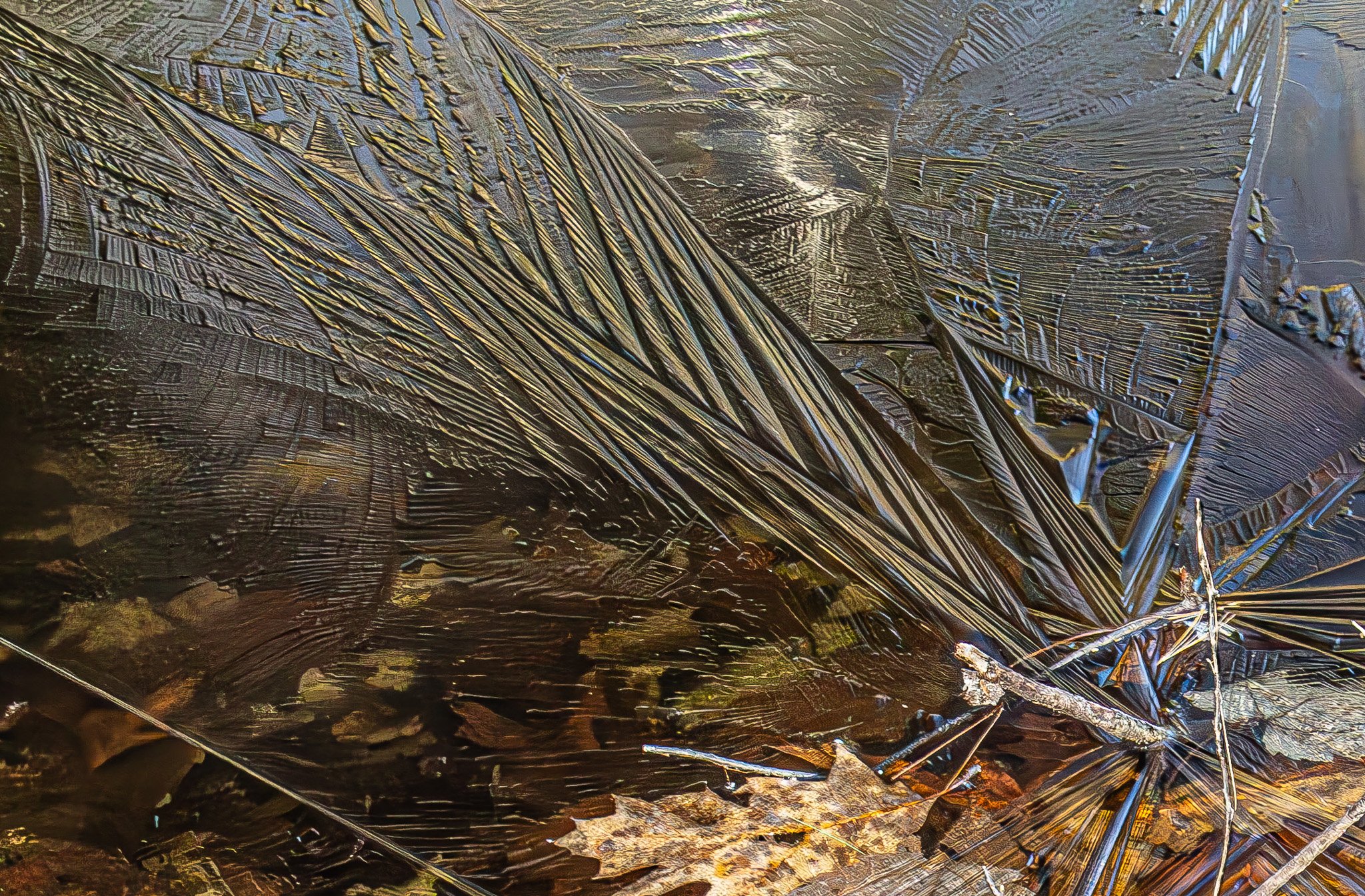
Detail of the feathery blades of the previous image: Detail of the ice seed host twigs shown next.

Detail of host twigs shown in previous two images: The radial arms have ridges, some of which reflect the blue sky and others reflect direct sunlight.
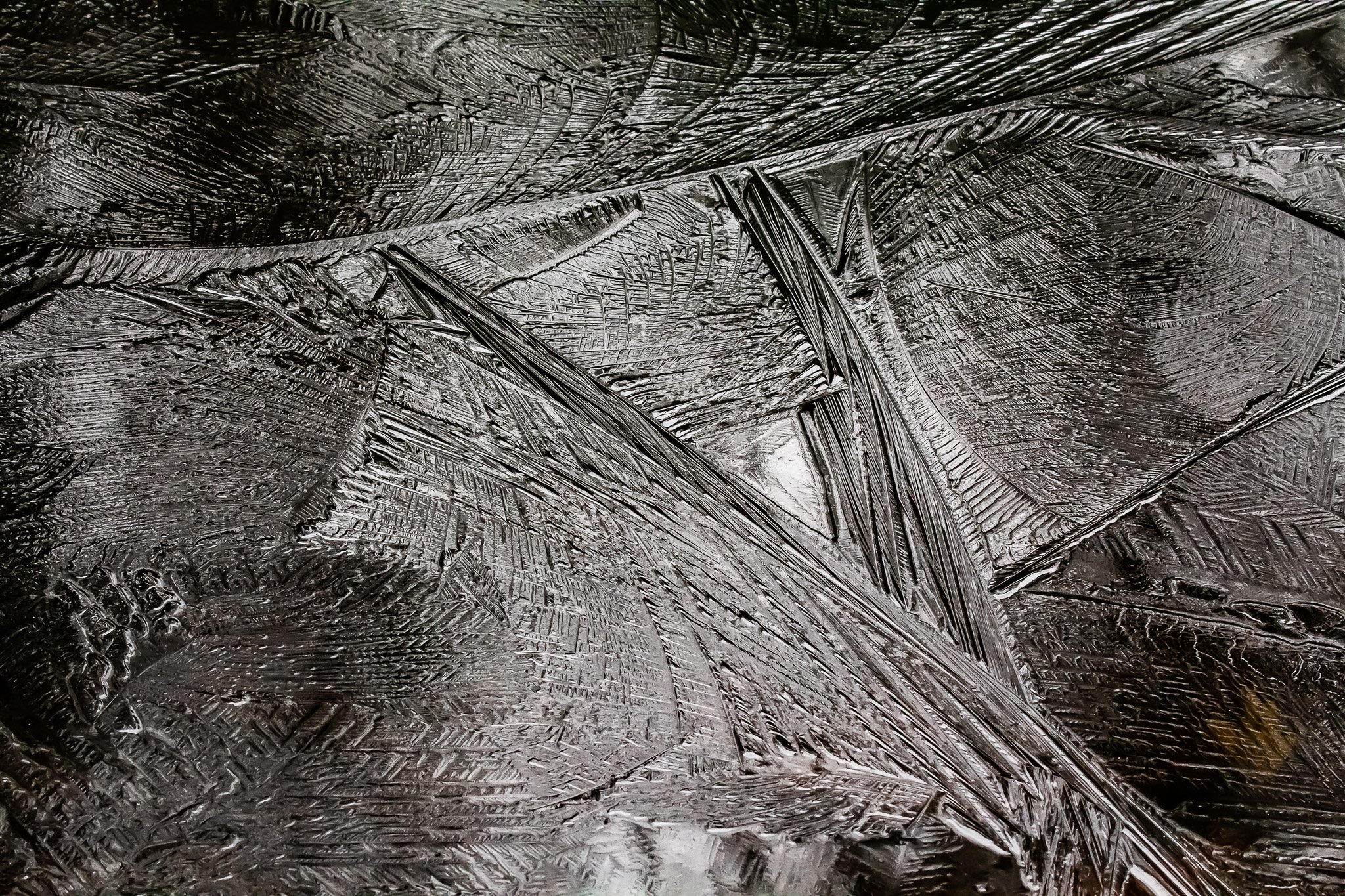
Dendrites and Blades Under An Overcast Sky: I took this on the afternoon of November 15, 2022. No sun, no color.

Sea Of Blades With Meltwater: The blades ranged from a few to 15 cm in length. The areas clear of crystallization are meltwater, with capillary fringes along edges and curving into corners.
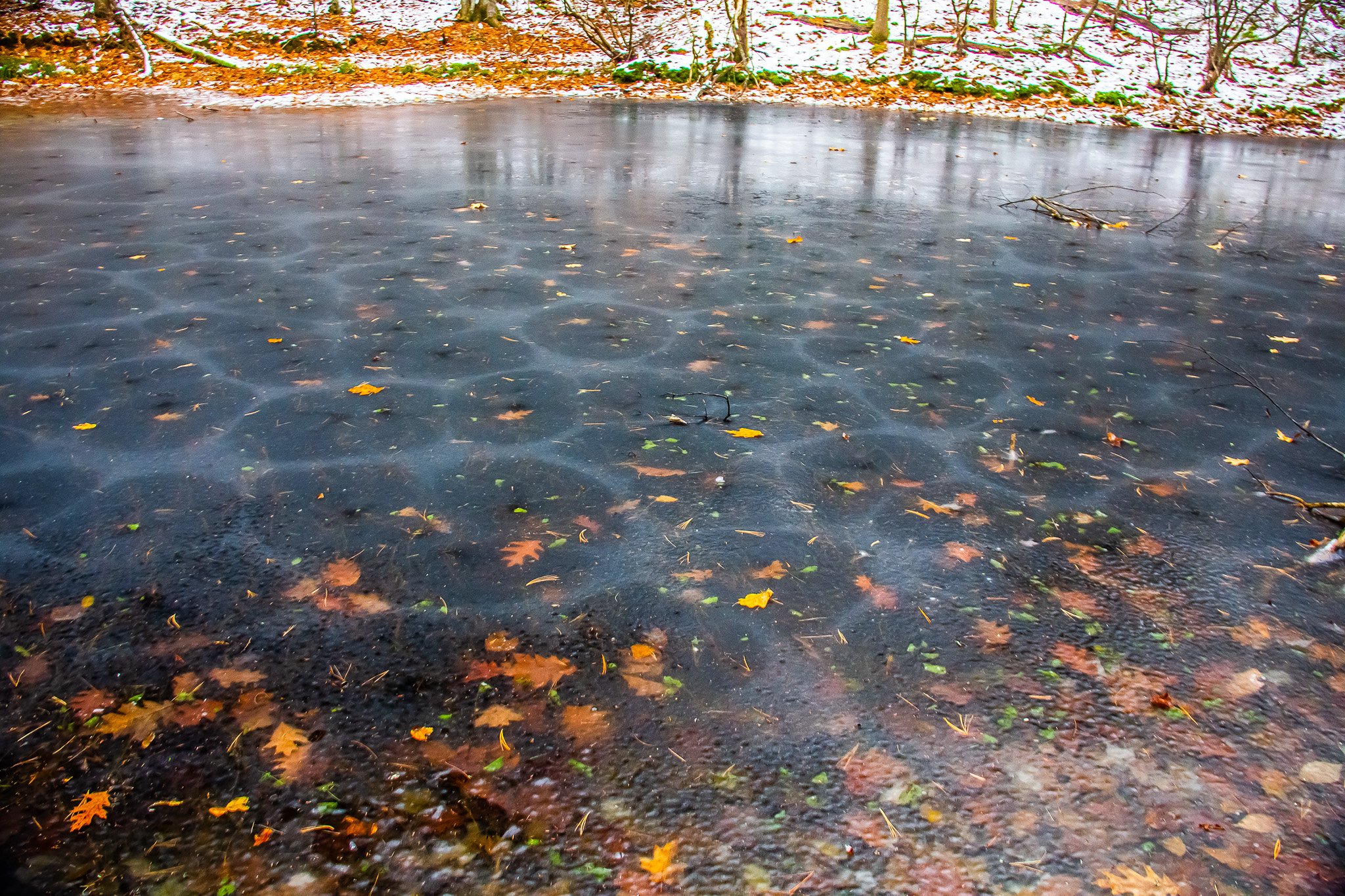
Late Fall Polygons: These polygons occurred ten days after this pond first froze. The ice was up to 5 cm thick and isothermal at 32 degrees F. The polygons are recrystallized ice. Their formation was likely related to thermal convection caused by warm water. Within each polygon was a rough, star-like, clear-ice (aka black ice) formation commonly seen in spring when ice also becomes isothermal at 32 degrees F.

Melting Ice Blades With Seed Twig Over Fall Leaves. This image was taken almost directly overhead, and the seeding stump is in the middle. There are little melt pools on the blades, as evidenced by their elliptical outlines which are capillary fringes.

Near-shore Bladed Stars: This image shows melting in the lower third where thin black rings are troughs of a wavy pattern of capillary surface tension. The horizontal blade at left is about 14 cm long. Smooth blue areas are likely sky reflections. This photo was awarded an honorable mention in a local photography contest.

Shimmering Fall Through Broken Ice: Freezing also occurs during the spring. This image was taken on April 10, 2016, when the ice that had formed the past night began to break up.
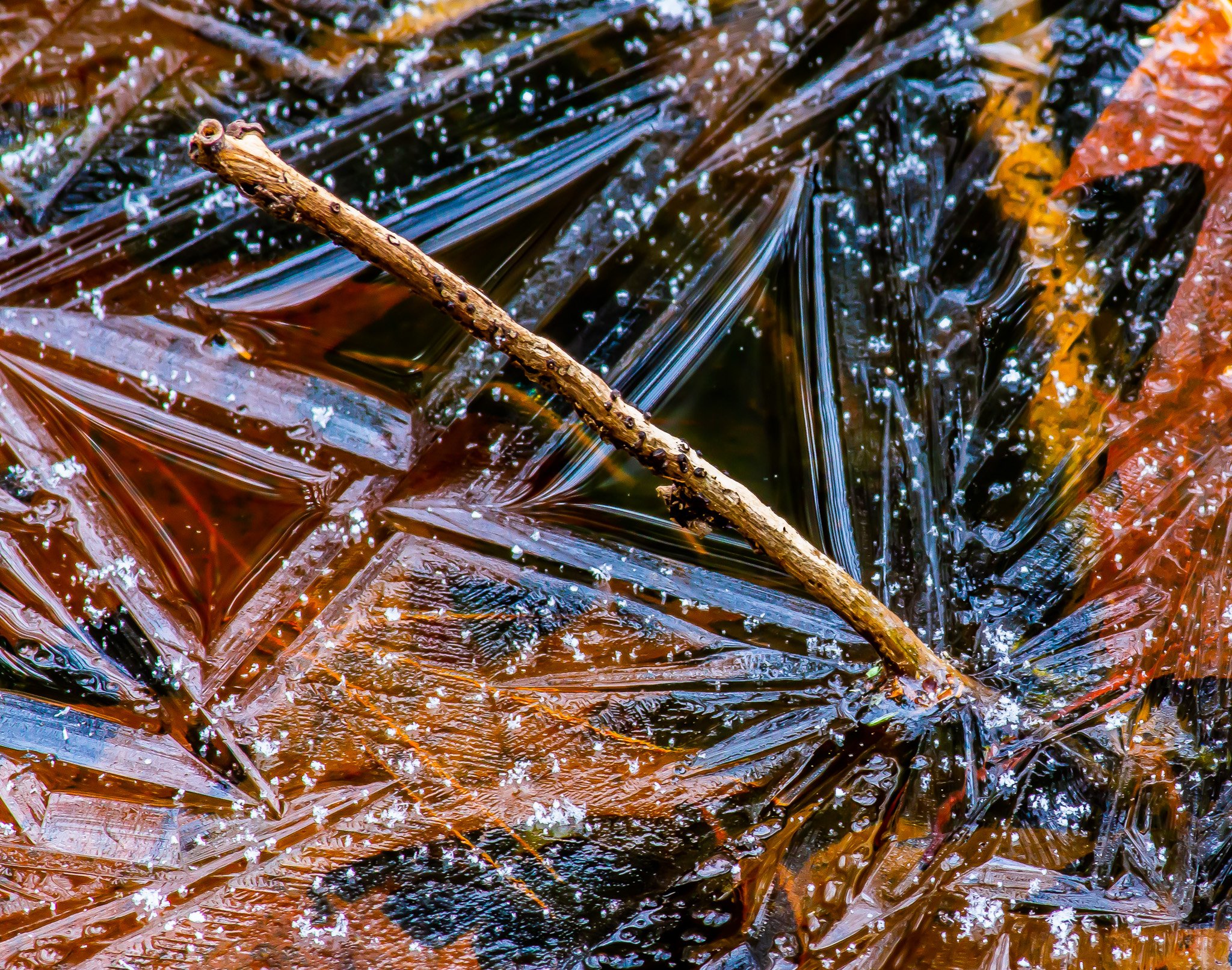
Seed Twig And Triangle Of Blades: This image shows the curvature of capillary fringes in the meltwater between the triangle of blades. This photo appeared for February in the 2024 Geological Society of America calendar.

First Freeze, Noon, 13 November 2023. The freeze occurred the previous night but by noon metamorphism had set in.

Detail of metamorphosed Ice-Star Blades With Seed Twig. Metamorphism is evident in the wavy lines (from melt) and pock-marked blades on the right side.

Leaf Edge Among Ice Blades. At center is the top edge of a leaf, next to which is a small pine cone. This debris was the source of the ice blades that grew from them.

Ice Blade Cluster. It is not clear where these blades were seeded, but likely at the apices of these triangular blades. As they grew simultaneously each prevented its neighbors from growing adjacent mosaics. It was surrounded by pock-marked ice. A close look will find wavy edges, a sign of melt.

White Moss-Blue Ice With Melt-Brown Leaf. The debris sat upon what appears to be an agglomeration of reshaped ice blades with melt at their joints. The green color to the melt was real.

Small Ice Blades Among Fall Debris

Advanced Metamorphosed Ice Blades With Edge Melt

Melt Margins, Decaying Ice and Fall Debris. The green color of the edge melt showed up in several images

Reeds Within Metamorphosed Ice

Metamorphosed Ice with Orange Leaf

Maze Of Metamorphosed Dendritic Ice

Metamorphosed Ice-Star Blades Without Obvious Seed Twig. Brown apparent twig at one o'clock may have been the seed. The interludes panels between 2 and 2:30 and between 9:30 and 11 are recrystallized mosaics because they have sharp edges and patterns not seen in any original freezes. Blue color was supplied by ice, and red, orange and greenish gray by sub ice vegetation.

Branch Upon Metamorphosed Ice

Moss And Leaf Upon Near Shore Blue Ice

Golden Debris On Metamorphosed Ice

Blue Blades And Twig on Late Fall Leaves

Silvery Leaf And Metamorphosed Ice Blades That Partially Covered The Leaf. The blades were adrift when they became fixed in a secondary freeze. Red color is from oak leaves beneath the ice.

Transparent Ice Star

Silver Blades On Red With Seed Twig: It appears that a few blades had drifted from the original cluster that grew from the seed twig and then were fixed within a secondary freeze of "black" ice. The red color is from oak leaves beneath the ice.

Melting Ice Blades Among Fall Leaves

Silver Star On Red. At left, within the widest wedge, is a recrystallized mosaic, evident by the sharp edges within this new form of sheaths.

Teal Star Grown From Moss-Covered Twig In A Matrix Of Black Ice.

Teal Star With Moss: This is a detail from the previous image. The rounded blades give the appearance of a butterfly.

Radial Blades Over Orange Leaves In A Matrix Of Black Ice: The blades at lower left and upper right appear to be of an older formation. Those at lower right likely formed within the newer matrix.
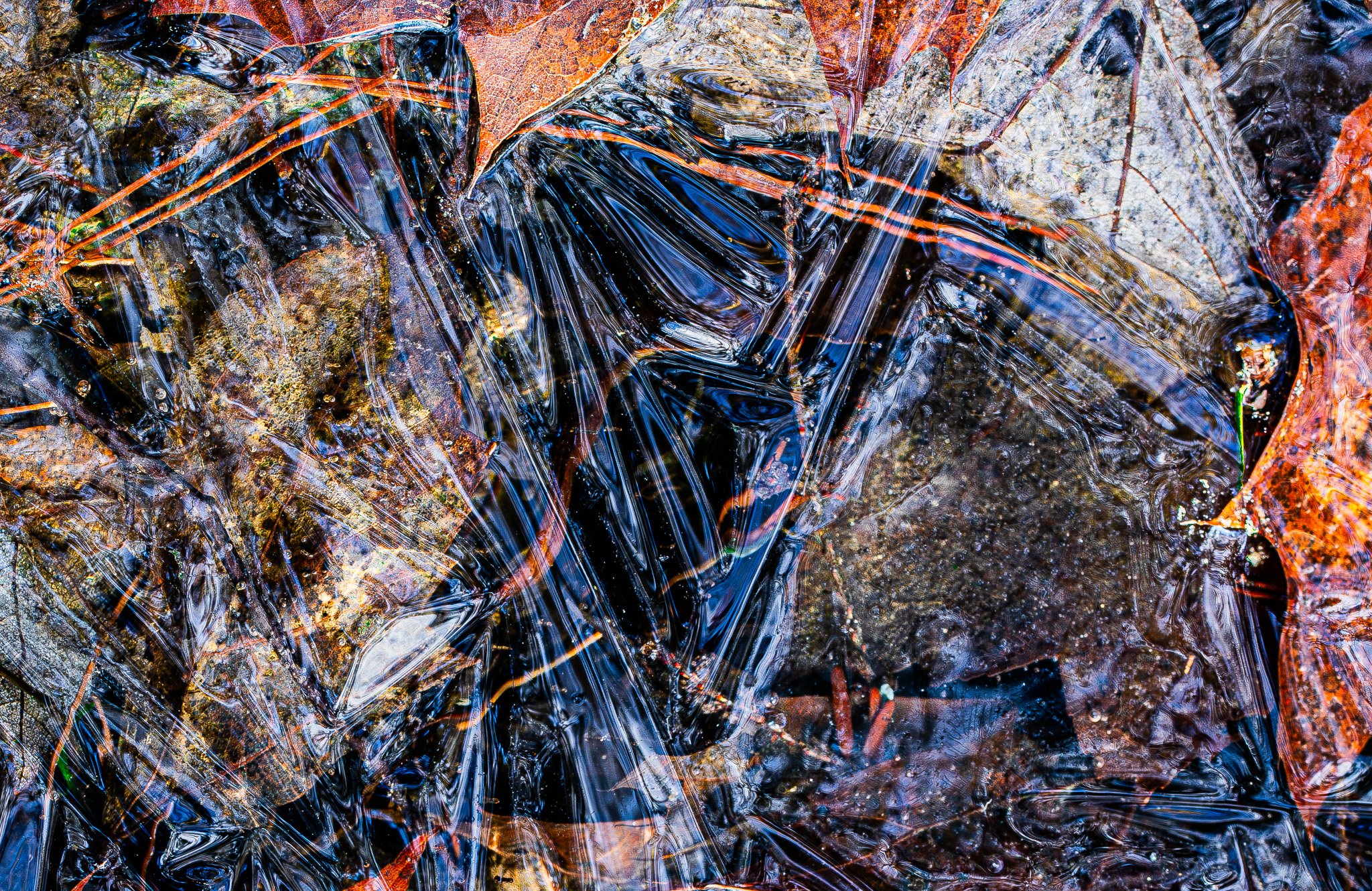
Triangle of Elliptical Capillary Fringes Indicating Melt Pools Within Ridges Formed Within A Matrix Of Black Ice. Image acquired 1 January 2024 during a thaw.

Red-Blue-Green Star Arms And Inter-arm Mosaics.

Blue Capillary Elliptical Fringes indicating Melt Pools On A Black Ice Matrix Among Fall Leaves

Blue Capillary Swirls On Ice With Green-Veined Leaf

Fall Leaves Beneath Blue Capillary Ellipses On A Black Ice Matrix

Pipkrakes Extruded From "Tight" Clay: The clay was not very porous and so the ice mainly extruded through the surface than expand within the soil. These extrusions are obviously not "pond" ice but overlooked the north end of my photogenic pond. They are sometimes referred to as needle ice. They were about 10 cm long.

Five-fingered metamorphosed pond-ice blades
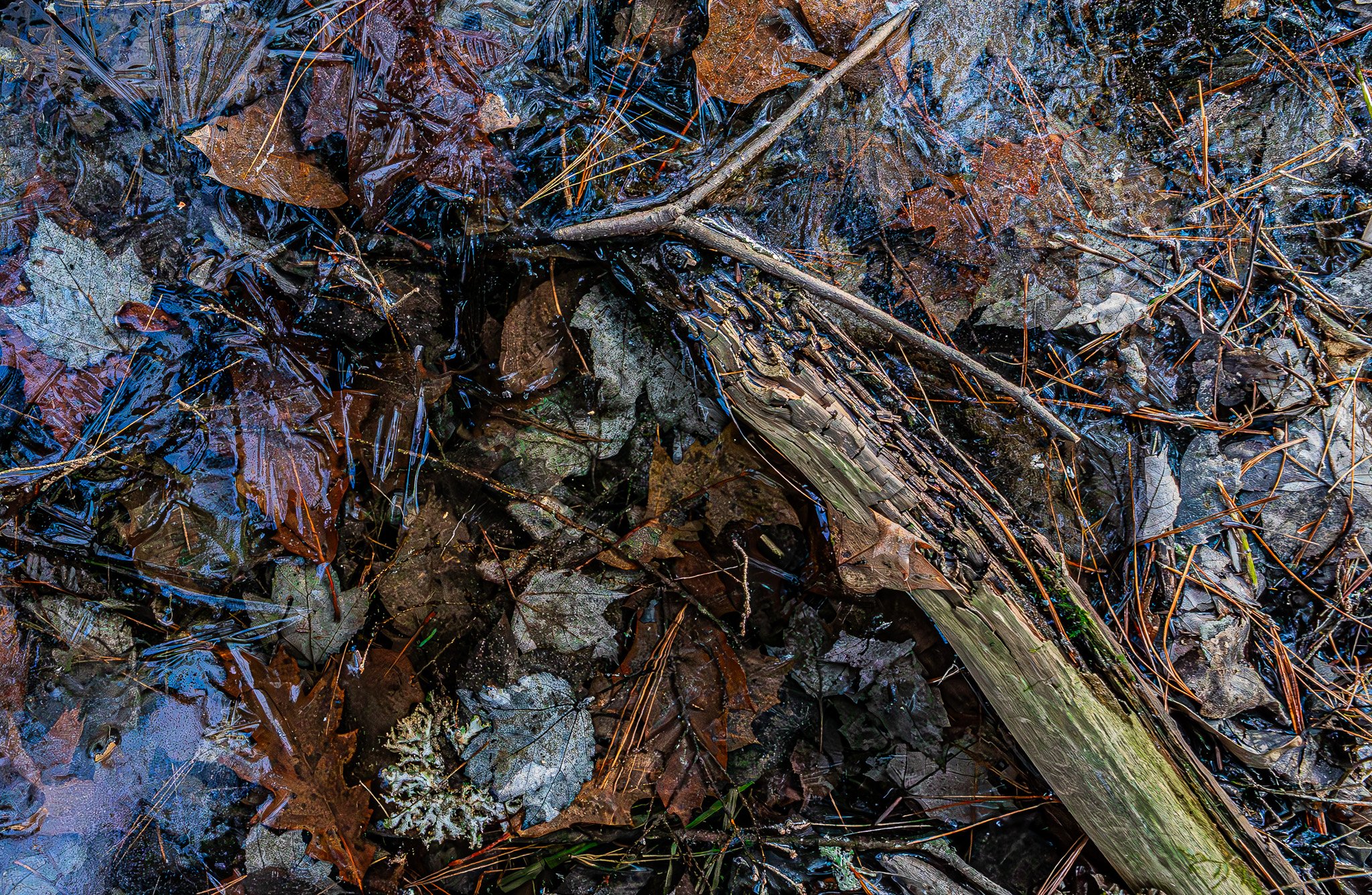
Blue Pond Ice Blades And Shards Of Blades, Fall Leaves And A Log Impregnated With Blue Ice: Image taken January 1, 2024, after yet another early winter warm spell.

Yellow Leaf below pond black-ice matrix containing adrift blue transparent blades: Very thin diaphanous ice blades upon the leaf appear like a dragonfly, the "tail" of which was the host twig for seeding this once-star.

Detail from previous image showing the blue blades on a twig head.

Blue Blades On Twig Head expanded from previous two images. The blue blades were adrift when they became frozen into a secondary freeze of "black" ice.
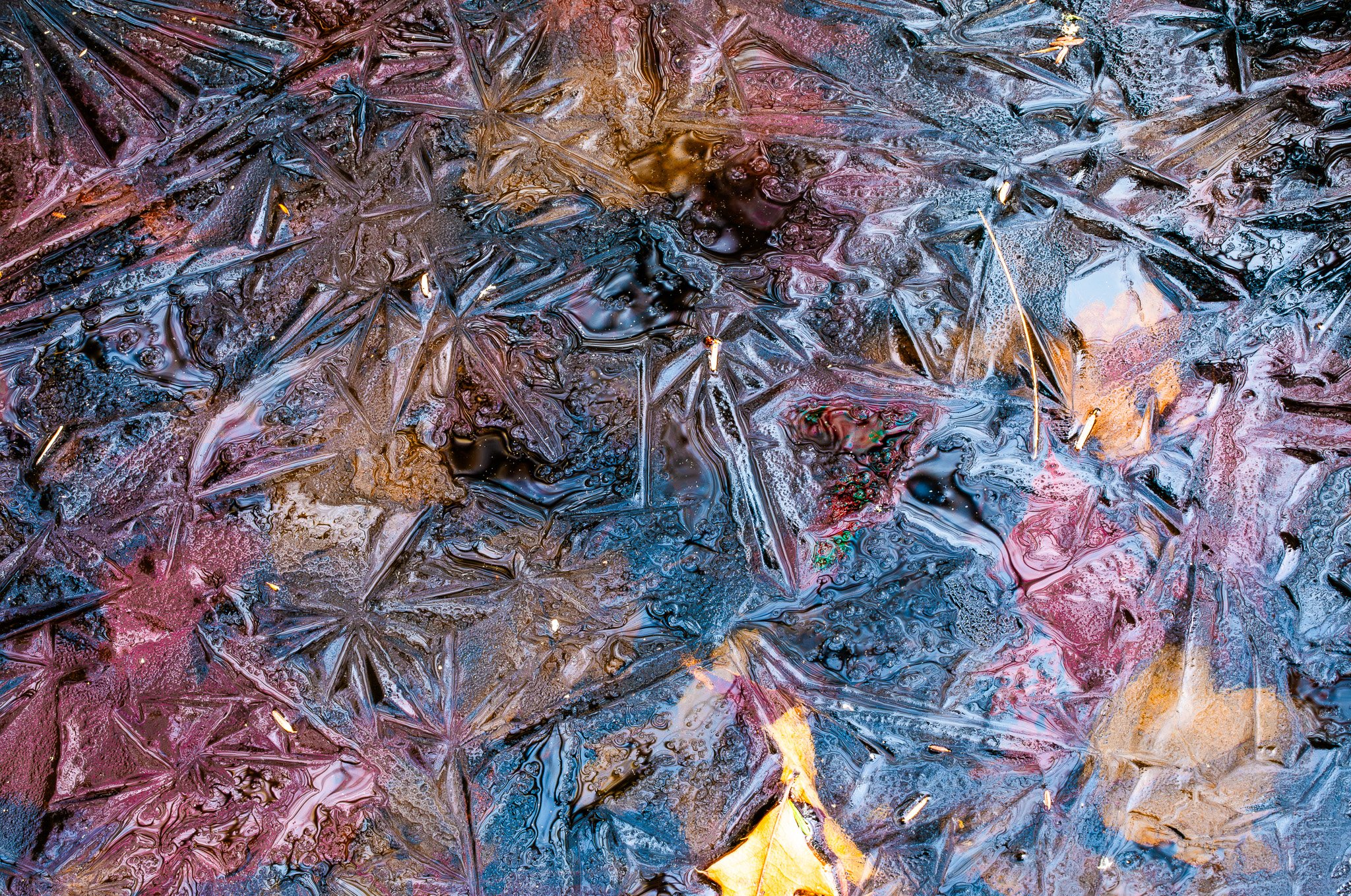
Multiple metamorphosed pond-ice stars, of which I can count 17.

First detail from the previous image of metamorphosed blades in late fall

Second detail of previous image of metamorphosed dendritic ice. The red color is from a leaf beneath the thin ice.

White Moss, Blue Blades and Silvery Silvery metamorphosed mosaic. An asian lady beetle is within the moss. This image has too many focal points.

Mid-Fall Ephemeral Thin Ice: This formed during 14 November, 2024, after a night of radiational cooling of Chambers Pond, West Lebanon, NH. Speckles were air bubbles within the thin clear ice. Note the 5-needle cluster, from an eastern white pine.

Mid-Fall Ephemeral And Highly Metamorphosed Pond Ice Mosaic: This formed after a night of radiational cooling on Chambers Pond, West Lebanon, NH, 14 November, 2024. The bright dot at lower right is the top of the twig that hosted ice seeds that grew into the radial arms above and below it. The arms at 1100 (clock analogy) had a series of at least five twinned arm growths.
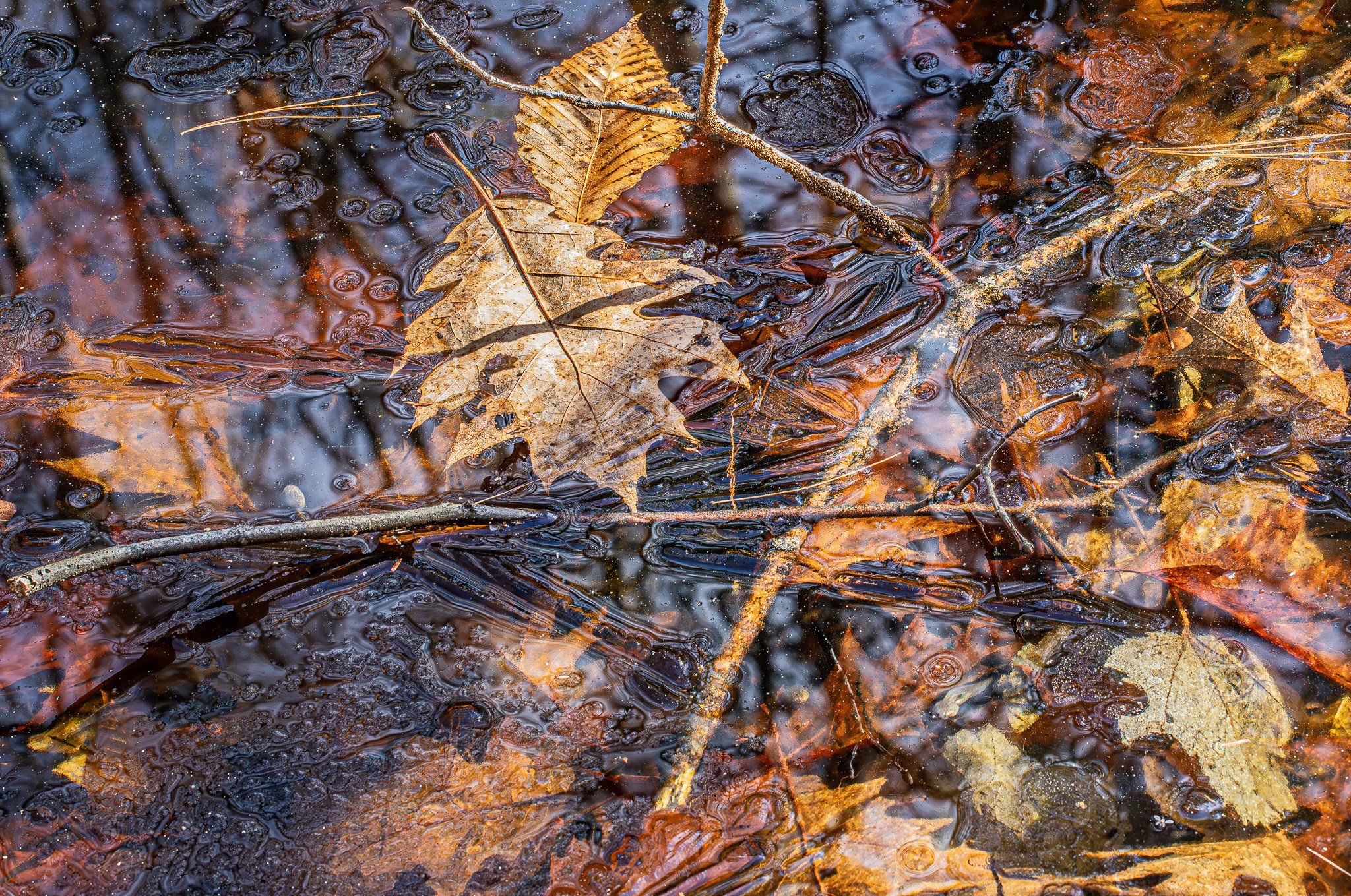
Clear fall ice 14 Nov 2024, with capillary fringes around leaves, twigs and ice pieces.